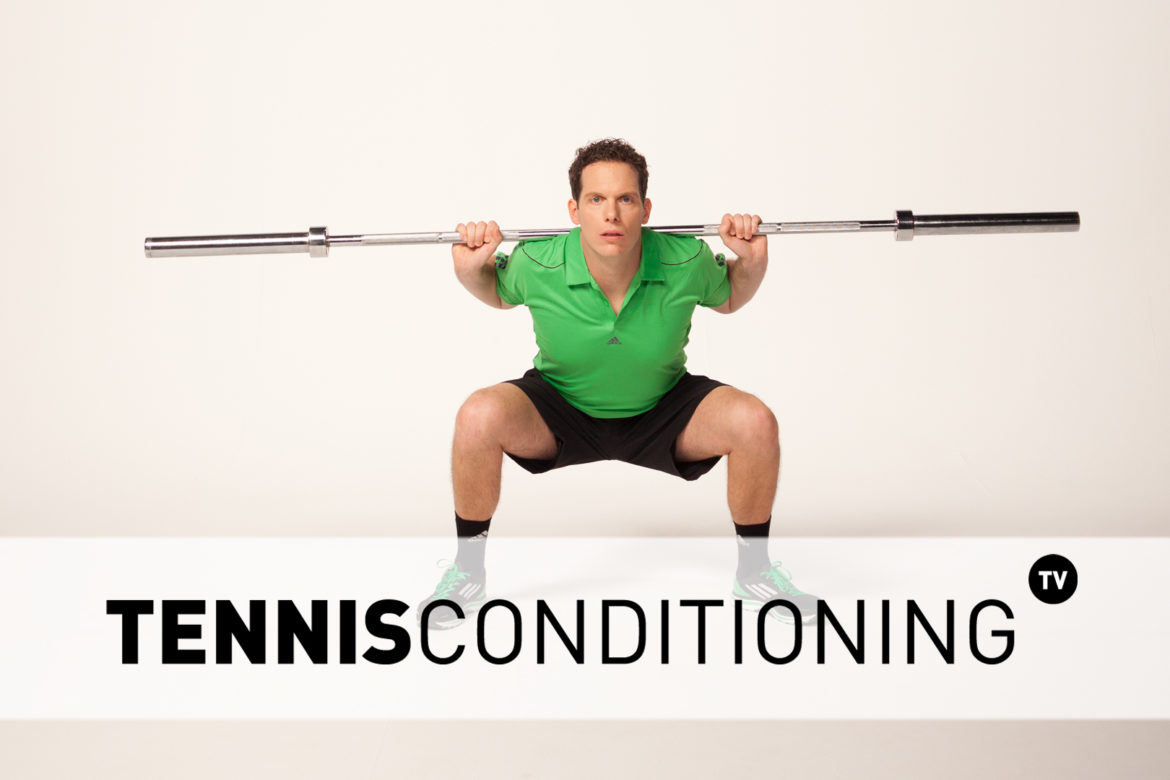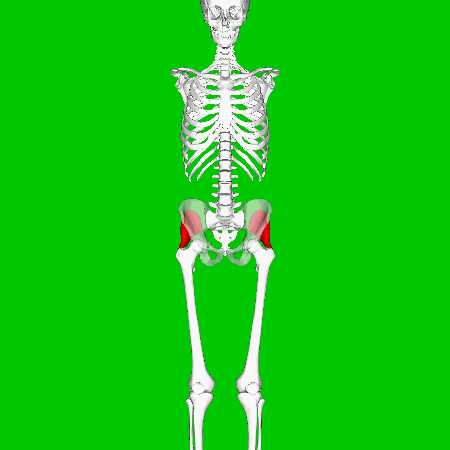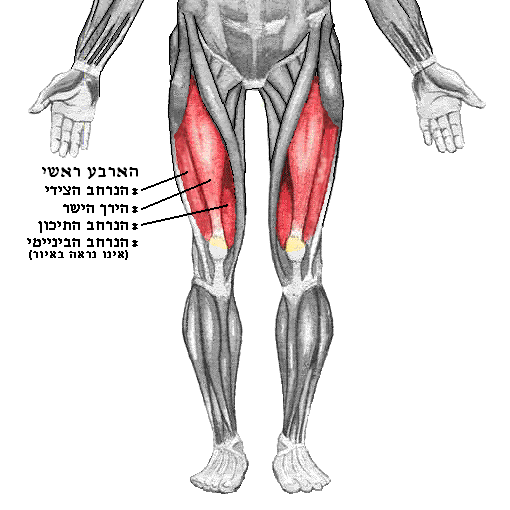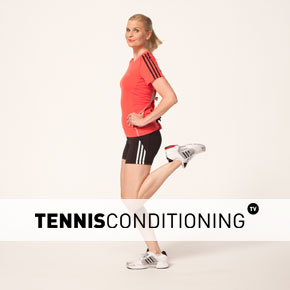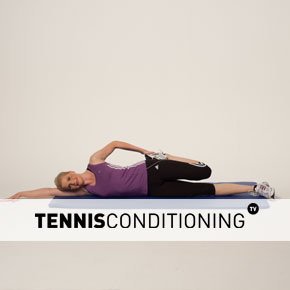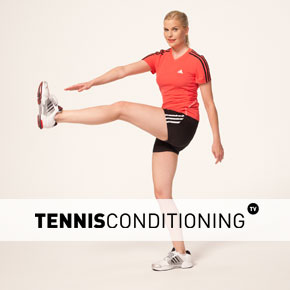The lateral squat is an essential compound resistance training exercise to strengthen the hip abductors, hip- and knee extensors and enhance lateral movement abilities.
Because the lateral squat is a compound exercise activating numerous muscle groups simultaneously, body control and neuromuscular system efficiency can be improved.
Since the lateral squat emulates the movement characteristics seen during open-stance shots as well as recovery and movement alongside the baseline, you should include the lateral squat into your workout program.
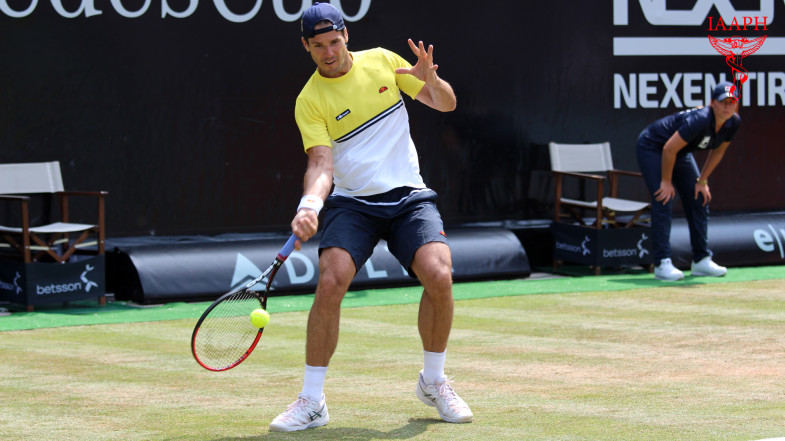
Lateral Squat Progression
If you use additional weights…make sure you use appropriate resistance so you can control the action throughout the entire range of motion. Otherwise you defeat the purpose of the exercise.
Very often, people use too much resistance and they become sloppy. Especially when it comes to maintaining core stability.
Also, don’t just progress with adding more weight. First, maximize the speed while maintaining perfect form.
Lateral Squat Description

- Position barbell chest level on the rack; add resistance (plates) and attach safety clips
- Take an athletic stance; stand straight, feet are just wider than shoulder-width apart; knees slightly flexed; toes point slightly outward (10˚-20˚)
- Use a pronated grip (palms facing down) and place hands slightly wider than shoulder-width apart on the bar
- Move head underneath the barbell and position barbell superior to the spine of the scapulae (on the top shelf created by the trapezius); do not place barbell on top of the cervical spine!
- In athletic stance step sideways to the right, and drop hips in the center into the squat; knees are outside shoulders; keep weight on heels
- Step out of the squat position to the right back to athletic stance
- Step back into the position to the left by dropping hips in the center into the squat; knees are outside shoulders
- Step out of the squat position to the left back to athletic stance
Note: If the athlete has flexibility issues and/ or for teaching purposes, a stance wider than shoulder-width is warranted.
Lateral Squat Targeted Musculature
- Gluteus Medius & Minimus
- Gluteus Maximus
- Hamstrings
- Quadriceps
Training Zone
In this section we provide you with some exercises you can use to optimize your training.
The exercises have been grouped and selected based on the major muscle group(s) they target. The prime movers.
The first exercise is a dynamic warm up to increase muscle tissue temperature to prepare you for your workout.
For more info take a look at the benefits of a proper warm up routine.
The second exercise is a free-weight resistance training exercise to strengthen the respective prime movers and improve neuromuscular system efficiency.
Why? Find out more about the purpose of weightlifting for tennis players.
The third exercise is a static stretching exercise you can do following your workout as a cool down to improve flexibility and reduce muscle soreness.
Here is more information on the benefits of static stretching.

